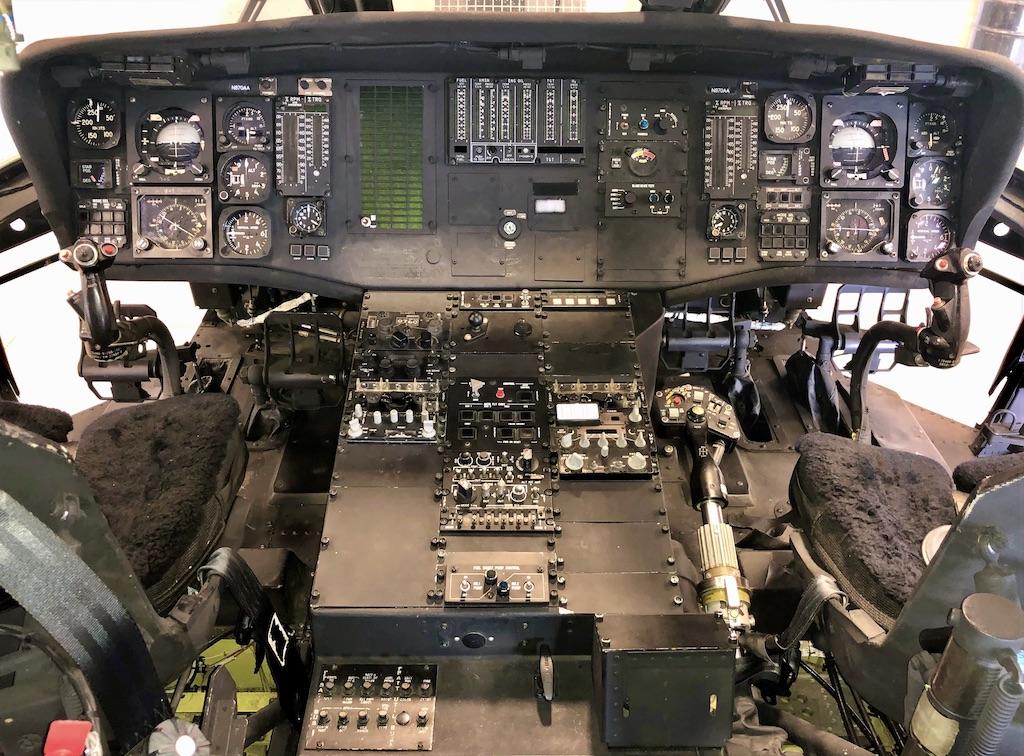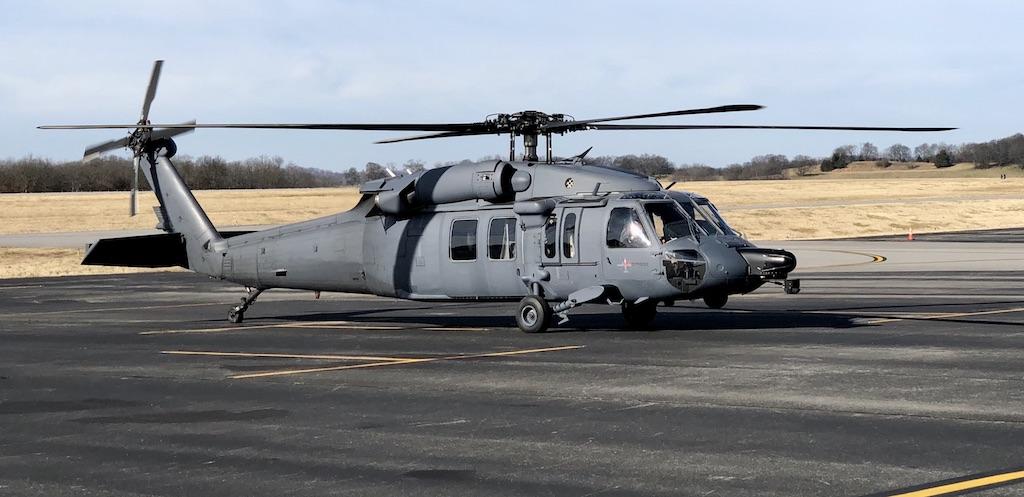
Genesys Aerosystems, formed from the management buyout of Chelton Flight Systems and S-TEC Corp., from Cobham Avionics in 2014, is ramping up marketing of its modernized avionics suite for special mission and foreign military UH-60A/EH-60A Black Hawks.
Genesys, based in Mineral Wells, Texas, and XP Services of Tullahoma, Tennessee, obtained FAA supplemental type certification (STC) of the electronic flight instrument system (EFIS) upgrade in October 2020. Depending on a facility’s capabilities, the suite can be installed in about eight weeks at a cost of “under $2 million,” the company says.
While available as a complete cockpit avionics suite, the system’s building block design provides Black Hawk operators with the option of an incremental upgrade path to support constrained budgets and installation time frames, Genesys says.
“We’re very flexible,” says Jamie Luster, Genesys Aerosystems director of sales and marketing. “We have in the past done a full STC certification with EFIS and engine interface, etc., in 6-9 months. When we decide something is important for the business we’ll pursue it pretty aggressively.”
Full Upgrade


The full EFIS upgrade includes four large-format, night-vision-goggle (NVG)-compatible IDU-680 displays that replace all standard analog gauges in the legacy UH-60 cockpit. Each IDU-680 display features synthetic vision, built-in flight management system for navigation and communication radios, HTAWS (helicopter terrain awareness and warning system) and geo-referenced hover vector. Engine instruments and master caution lights are replaced with quadruple redundant EICAS (engine indication and crew alerting system) display pages. Coupled to the avionics suite is a digital 3-axis IFR-certified autopilot.
The suite comes with the Genesys digital radio with combined VOR, localizer, glideslope and marker beacon navigation. The dual GPS/SBAS navigation system supports NexGen procedures, including point-in-space helicopter approaches, U.S. Coast Guard search and rescue patterns, and user-defined precision approaches.
“It is a full avionics modernization suite—not just the EFIS displays,” Luster says. “It includes our helicopter autopilot, which goes on top of the Black Hawk stability augmentation system. It takes out all of the old mechanical gyros and uses our new solid-state ADAHRS, so you save a lot of weight in and of itself there. We’ve got technology like Highway-In-The-Sky [a flight path display], our own open architecture system where we can give each customer customized pages for their engine displays [and] warning systems. We have in the past with come up with specific simulated weapons pages so [customers] can do training exercises with that.”
International Market

The UH-60 Black Hawk is the workhorse of the U.S. Army, which operates 2,135 of the Sikorsky-built helicopters. The Army National Guard operates 907, or about 40% of the fleet; of those 150 are the oldest A models.
The active Army retired its last A model in 2020. The Guard plans to fly A models, which are more than 35 years old, until 2025 as it continues to field the M model, Aviation Week has reported.
Sikorsky announced in December 2021 that it had received a restricted category special airworthiness certificate from the FAA that allows civil and commercial customers to buy new-build S-70M Black Hawks for agricultural, external cargo and firefighting applications. Previously, only buyers of surplus former U.S. military Black Hawks could obtain restricted category certification for commercial operations.
Public utility company San Diego Gas & Electric received the first S-70M, which will be modified by mission systems installer United Rotorcraft of Englewood, Colorado, to the Firehawk firefighting configuration. Lockheed Martin-Sikorsky’s PZL Mielec subsidiary in Poland will build new S-70Ms.
While it is interested in the U.S. domestic market for UH-60 cockpit retrofits, Genesys is eyeing international operators of the UH-60A Black Hawk for its cockpit modernization suite. The company also plans to certify the upgrade for later-model UH-60Ls, Luster says, and sees a target market of 500+ helicopters.
Among the largest international operators of the Black Hawk variants are the Turkish Land Forces, with 64 S-70A export versions; the Colombian Army, with 42 UH-60Ls; the Israeli Air Force, with 42 S-70As; the Royal Saudi Land Forces, with 27 UH-60Ls; the Turkish Gendarmerie, with 26 S-70As; and the UAE Joint Aviation Command, with 20 UH-60Ls, according to the Aviation Week Intelligence Network Military Fleet & MRO Forecast. Countries also may operate other Black Hawk variants.
“We have been actively marketing it,” Luster says of the Genesys upgrade. “The process of getting the word out on the system for this platform has been a little cumbersome just because of the nature of who we’re selling to. But we are starting to make inroads through working with advisors in some of these locations who have the relationships with the decision makers and these military entities and that’s been hugely beneficial. I think we’ll see things pick up over this next year.”
In December 2019, Genesys obtained an STC for a similar cockpit modernization of the Bell 412, of which there are about 700 operating outside of the U.S., the company says. The Thai Police was the launch customer of the 412 upgrade, which costs about $500,000 to install, not including the autopilot.
Genesys, which was acquired by Moog Inc., in December 2020, is also working with Borsight Inc., of Ogden, Utah, to certify new avionics for the Aero Vodochody L-39NG Albatros jet trainer.





